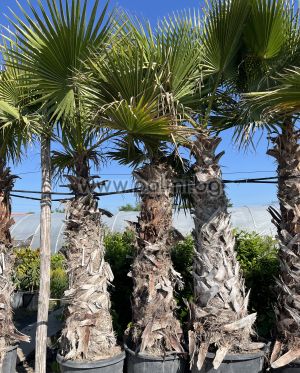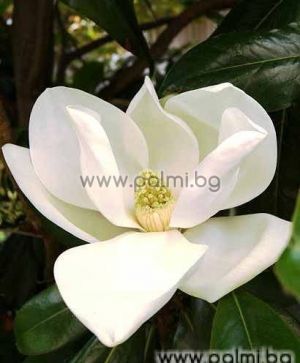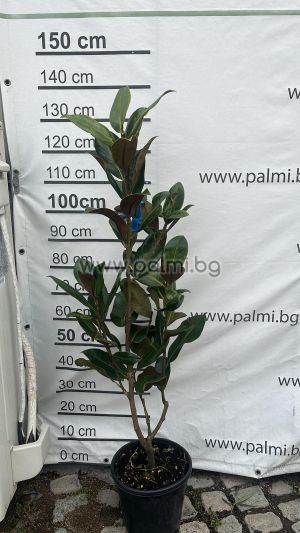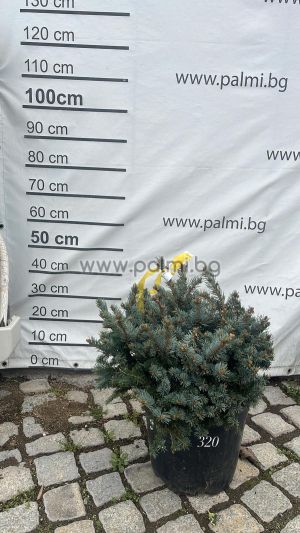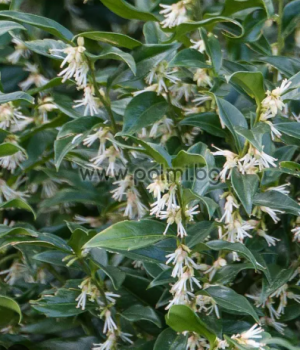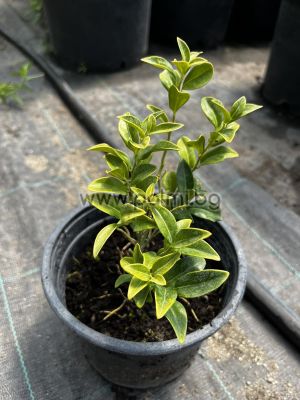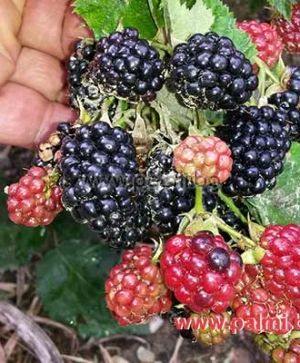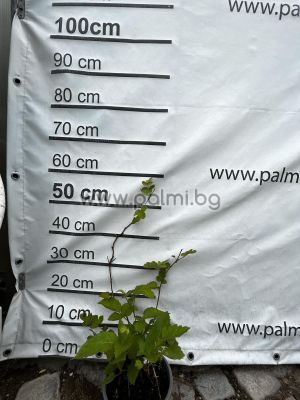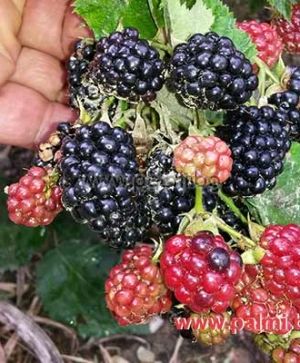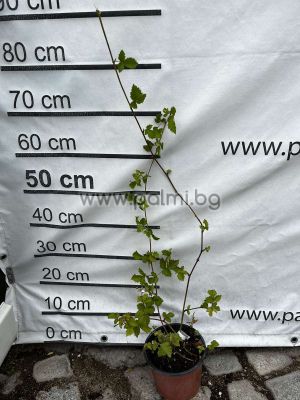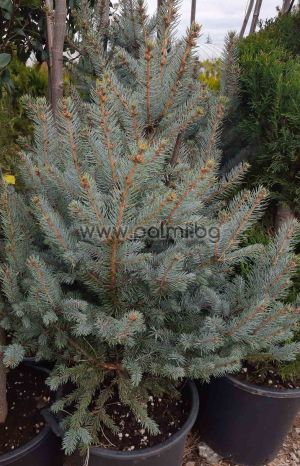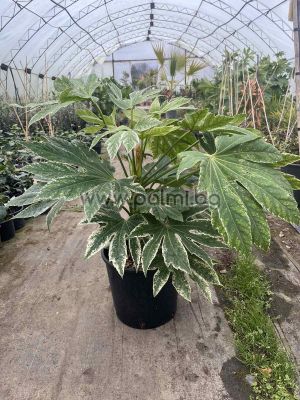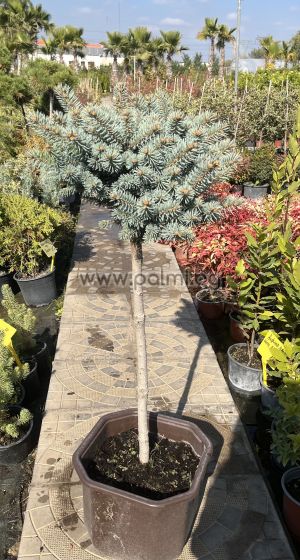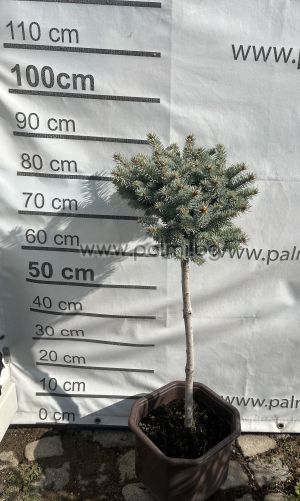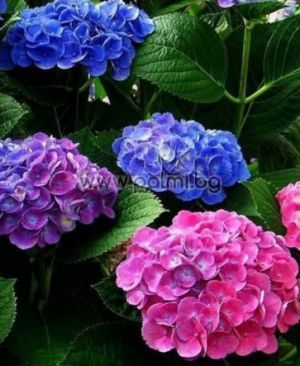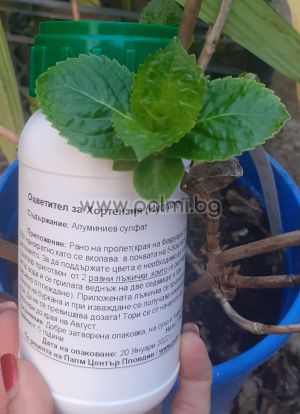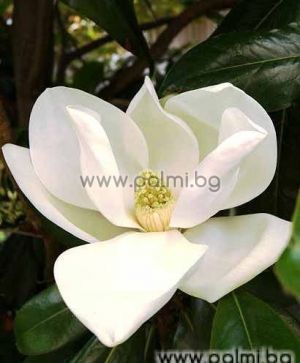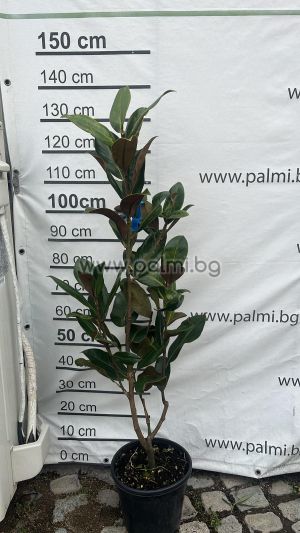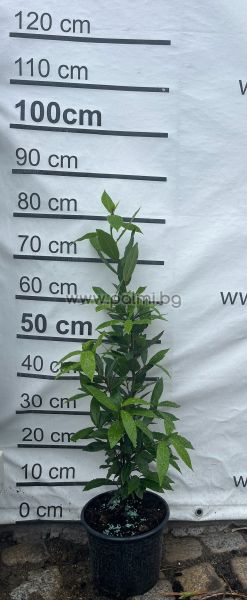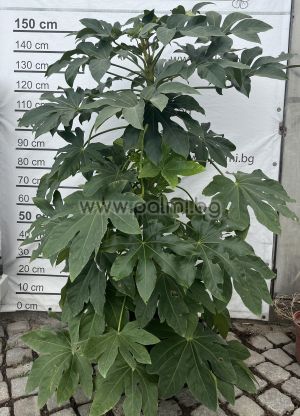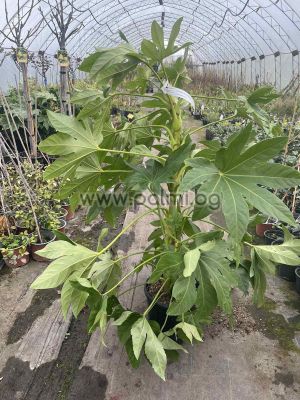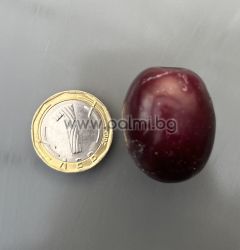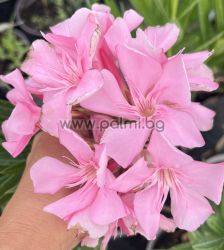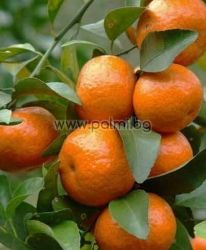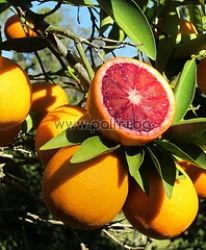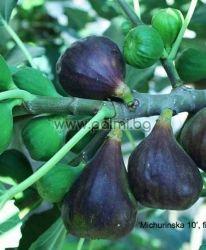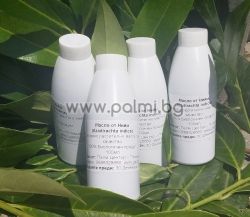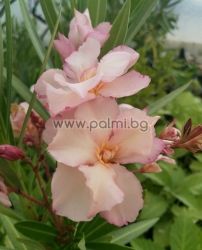New products
Lipo Lemon Citrus limon x Citrus paradisi
Citrus limon Lipo
Lemon Lipo from Botanical Garden - Plovdiv, Bulgaria
This is another bigger size for the citrus enthusiasts.
.
As with all other Citrus plants, the orange is susceptible to scales and spider mites and needs to be sprayed twice a year.
In winter it will need a cool place with temperatures 0-10 degrees Celsius. If the temperature is higher, the leaves usually fall off. In summer it needs to be outside and abundantly watered.
Much more information about all citrus species is available on our forum:
Availability: 10 pcs
Kaffir Lime
Important notice! Most citrus plants on the market are produced for planting in orchards in the Mediterranean countries. They have a large overall height, have high graft and are difficult to shape and support at home. Rootstocks on which they are grafted are very fast growing, which is fine for the open ground in the subtropics, but is not desirable when growing in pot in the temperate climate.
All our small citrus plants are produced specifically for the Bulgarian market and are ideally suited for home cultivation. The rootstocks cause compact growth, grafts are low and this allows making an excellent shape of the crown, to be suitable for growing in pots. The used rootstocks are trifoliate orange (Poncirus trifoliata 'Flying Dragon') and Volkamer lemon, Citrus volkameriana. Trifoliate orange is frost-hardy to -25°C, and significantly increases the cold resistance of plants grafted on it.
Citrus hystrix
Kaffir Lime from Botanical Garden - Plovdiv, Bulgaria
Kaffir lime is widely used in cooking in south-east Asia, where it originates.
In Thailand and Laos the leaves are used very often (eg. For "Tom Yam"). In Vietnam they are cooked with chicken for adding flavor. In Indonesia (Bali and Java) leaves are used for a variety of dishes with chicken and fish, they are an integral part of many of the world famous local specialties, eg. "Soto Ayam"
As with all other Citrus plants, the orange is susceptible to scales and spider mites and needs to be sprayed twice a year.
In winter it will need a cool place with temperatures 0-10 degrees Celsius. If the temperature is higher, the leaves usually fall off. In summer it needs to be outside and abundantly watered.
Much more information about all citrus species is available on our forum:
Availability: 9 pcs
Limequat
Limequat
Citrus x Limequat
This unusual citrus is a cross between a Lime and a Kumquat. This citrus will impress you with its beautiful fruits that are edible.
Its cultivation follows the principle of all other citrus trees, requiring abundant watering at least once a day in the summer, and twice a day on the hottest days.
In autumn, it is brought inside in a dry and cool place, with temperatures in the range of 1-15 degrees. In the spring, after it warms up and there are no nighttime sub-zero temperatures, it can be taken outside to start the formation of flowers and fruits. Flowering begins in February-March, and the ripening of the fruits is up to 6m.
Availability: 10 pcs
Unshiu Mandarin, Satsuma Myagawa grafted on Citrus volkameriana
Important notice! Most citrus plants on the market are produced for planting in orchards in the Mediterranean countries. They have a large overall height, have high graft and are difficult to shape and support at home. Rootstocks on which they are grafted are very fast growing, which is fine for the open ground in the subtropics, but is not desirable when growing in pot in the temperate climate.
All our small citrus plants are produced specifically for the Bulgarian market and are ideally suited for home cultivation. The rootstocks cause compact growth, grafts are low and this allows making an excellent shape of the crown, to be suitable for growing in pots. The used rootstocks are trifoliate orange (Poncirus trifoliata 'Flying Dragon') and Volkamer lemon, Citrus volkameriana. Trifoliate orange is frost-hardy to -25°C, and significantly increases the cold resistance of plants grafted on it.
Citrus unshiu Myagawa, Unshiu Mandarin
Satsuma Myagawa from Botanical Garden - Plovdiv, Bulgaria
Unshiu Mandarin (Satsuma, Tangerine) is the earliest mandarin on the market. These are the mandarins which you probably buy each year in October and November. They are generally seedless, peel very easily, and the taste is sweet, but also slightly sour.
Characteristic of the fruits of the Unshiu (Satsuma) mandarin are:
- - strong flavor
- - juicy and with high sugar content
- - moderate acidity
- - very thin peel
- - 8 to 12 segments
- - very early, ripen in October-November
- - seedless
Besides its valuable qualities, Tangerine Unshiu (Satsuma) is among the most cold resistant edible citruse after Kalamondin and Kumquat. When grafted on trifoliate orange, Trifoliata (Poncirus trifoliata), it will withstand short cold snap to -9°C, and with some damage on the leaves and young branches trees will withstand -12°C.
It is an absolute internet speculation, that there are other edible citrus varieties that withstand more cold, like the boasted orange hybrid US119 or Sanford F2 Curafora, which are less cold hardy than Kalamondin and Kumquat, or at the very best - equally cold hardy. Growing them outdoors without protection is not possible anywhere in Bulgaria. This was proved by our experiments since 1999 till now in the region of Assenovgrad.
As with all other Citrus plants, the orange is susceptible to scales and spider mites and needs to be sprayed twice a year.
In winter it will need a cool place with temperatures 0-10 degrees Celsius. If the temperature is higher, the leaves usually fall off. In summer it needs to be outside and abundantly watered.
Much more information about all citrus species is available on our forum:
Availability: 2 pcs
Mexican Fan Palm, Washington palm
The Mexican Fan Palm is among the fastest growing palms. If planted in the ground in south Bulgaria, a small plant of total size of one meter will easily grow to a meter of trunk with base circumference of more than a meter. And this in just 3-4 years.
An exceptionally easy palm to grow, both in the open ground or in pot.
More information about these palms is available in our forum: http://forum.palmi.bg/viewforum.php?f=32
Availability: 10 pcs
Evergreen Southern Magnolia, f. Gallisoniensis
Magnolia grandiflora Gallisoniensis, Evergreen Southern Magnolia
Magnolias take many years to bloom from seed. Our evergreen Magnolias are grafted and bloom immediately or next summer. Moreover, the variety Gallisoniensis has a beautiful dark green leaves. These are Magnolias, that you have probably seen everywhere in Italy and France.
These Magnolias grow without any problems anywhere in southern Bulgaria and along the Black Sea coast. But they will grow in quite a few places in Sofia and northern Bulgaria.
More information about Magnolias is available in our forum:
Availability: 17 pcs
Picea pungens Glauca Globisa,Dwarf
More information in Bulgarian is available in our forum:
http://forum.palmi.bg/viewtopic.php?f=9&t=514
Availability: 5 pcs
Sarcococca confusa
The sarcococcus is an evergreen shrub that prefers shade and semi-shade.
The leaves are oval, reach a height of up to 2 m and a width of up to 1 m.
A slow-growing species, it can reach its full size after 7 to 10 years.
The plant blooms in late winter and early spring with delicate white fragrant flowers.
After flowering, the fruits appear, which are spherical fleshy and red in color, not edible.
Watering is regular and moderate.
Availability: 13 pcs
Large hybrid blackberry ' Mora Dirksen'
Rubus fruticosus, Large blackberry 'Mora Dirksen'
from Botanical garden - Plovdiv, Bulgaria
The plant has a bushy habit, with a height of 0.80-2.50 m.
A self-fertile variety, flowering is in May and fruiting is from July to October.
Dry-resistant look, no special care required.
Availability: 17 pcs
Large hybrid blackberry ' Black Satin'
Rubus fruticosus, Large blackberry Black Satin
from Botanical garden - Plovdiv, Bulgaria
This variety reaches a height of 1.50-2.00 m.
Growth is compact, with flowers appearing in May.
The variety is self-pollinating, fruiting from July to October.
This variety is suitable both for direct consumption and for the preparation of sweets and jams.
Availability: 17 pcs
Picea pungens 'Hoopsii'
More information in Bulgarian is available in our forum:
http://forum.palmi.bg/viewtopic.php?f=9&t=514
Availability: 1 pcs
Fatsia japonica 'Spider Web'
Fatsia japonica 'Spider Web', Japanese Aralia
This magnificent evergreen plant is not new for Bulgaria. It grows in southern Bulgaria and around the Black Sea coast, as long as temperatures rarely fall below -15 degrees Celsius. It also grows in some places in colder areas such as Ichtiman or Sofia, where there area few large and fruit-bearing plants. Fatsia must be planted in the shade, otherwise leaves get burned by the summer sun and will turn black.
The 'Sider Web' variety has a more dense crown, more compact growth and better cold resistance. These subtropical plants bloom in early winter, and their fruits ripen in May. The berries are small and inedible and have only decorative value.
Fatsia is also known under the name Aralia. It has been grown in many homes and is now scientifically proven that its large leaves purify the air by some poisonous gases like formaldehyde, for example.
For more information please see the topic in our forum (in Bulgarian):
Availability: 2 pcs
Picea pungens Glauca Globisa,Dwarf
More information in Bulgarian is available in our forum:
http://forum.palmi.bg/viewtopic.php?f=9&t=514
Availability: 13 pcs
Hydrangea Colorant ( 300g)
Hydrangea Colorant (300g)
Contents: Aluminum sulfate
If you want to change the color of the pink hydrangea to blue, then you can use our hydrangea colorant.
Application:
In early spring (end of February), 250 g is applied once around the plant, digging 5-6 cm into the soil. This dose applies only to perennials planted in the garden. To maintain the color, the plants need to be watered every two weeks with a solution of 2 equal teaspoons, which are dissolved in 1 liter of water. This solution is also used for potted Hydrangea. It is very important before using the product that the plants are well watered with clean water. The attached spoon is pressed into the wall of the jar when removed. Do not exceed the dose! Applying from early March to late August.
Storage: In a tightly closed container, in a dry and dark place. Shelf life: minimum 2 years.
Packaging: 300 grams net.
Availability: 84 pcs
Evergreen Southern Magnolia, f. Gallisoniensis
Magnolia grandiflora Gallisoniensis, Evergreen Southern Magnolia
Magnolias take many years to bloom from seed. Our evergreen Magnolias are grafted and bloom immediately or next summer. Moreover, the variety Gallisoniensis has a beautiful dark green leaves. These are Magnolias, that you have probably seen everywhere in Italy and France.
These Magnolias grow without any problems anywhere in southern Bulgaria and along the Black Sea coast. But they will grow in quite a few places in Sofia and northern Bulgaria.
More information about Magnolias is available in our forum:
Availability: 5 pcs
Bay laurel, Sweet bay, True laurel, Grecian laurel
<p style="text-align: center;"><span style="font-size:22px;"><span style="color:#006400;"><span style="font-family:georgia,serif;">Bay laurel, Sweet bay, True laurel, Grecian laurel - size S</span></span></span></p>
<p>Laurel plants of our new production for this season. These plants are perfect for hedges or a solitaire plants in southern Bulgaria. In northern parts they need protection or in a very cold winter will freeze to the ground.</p>
<p>More information is available on our forum:</p>
<p><u><a href="http://forum.palmi.bg/viewtopic.php?f=66&t=717" target="_blank"><span style="color:#0000FF;">http://forum.palmi.bg/viewtopic.php?f=66&t=717</span></a></u></p>
Availability: 39 pcs
Japanese Aralia var. 'Moseri'
Fatsia japonica 'Moseri', Japanese Aralia
This magnificent evergreen plant is not new for Bulgaria. It grows in southern Bulgaria and around the Black Sea coast, as long as temperatures rarely fall below -15 degrees Celsius. It also grows in some places in colder areas such as Ichtiman or Sofia, where there area few large and fruit-bearing plants. Fatsia must be planted in the shade, otherwise leaves get burned by the summer sun and will turn black.
The 'Moseri' variety has a more dense crown, more compact growth and better cold resistance. These subtropical plants bloom in early winter, and their fruits ripen in May. The berries are small and inedible and have only decorative value.
Fatsia is also known under the name Aralia. It has been grown in many homes and is now scientifically proven that its large leaves purify the air by some poisonous gases like formaldehyde, for example.
For more information please see the topic in our forum (in Bulgarian):
Availability: 1 pcs









